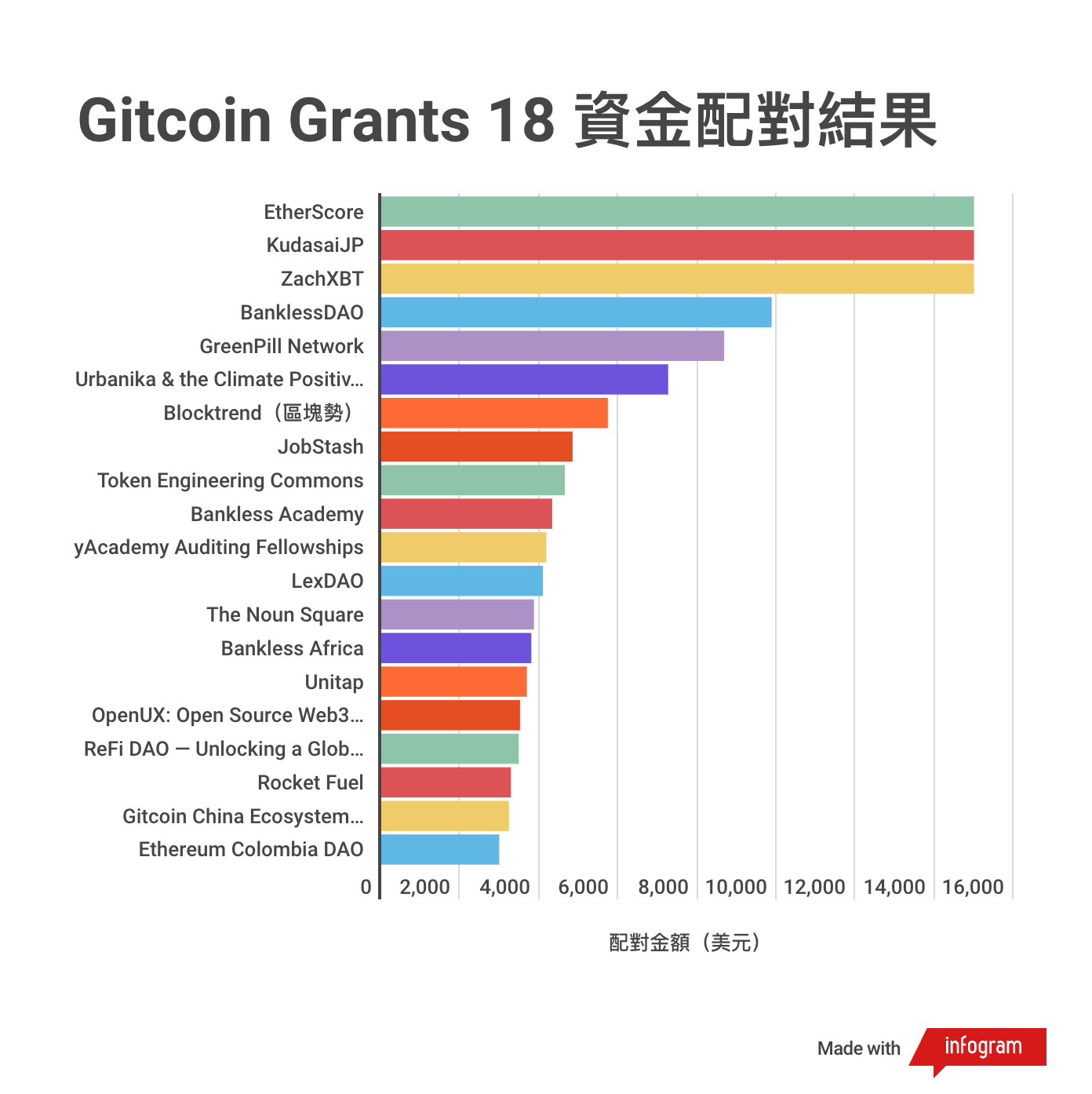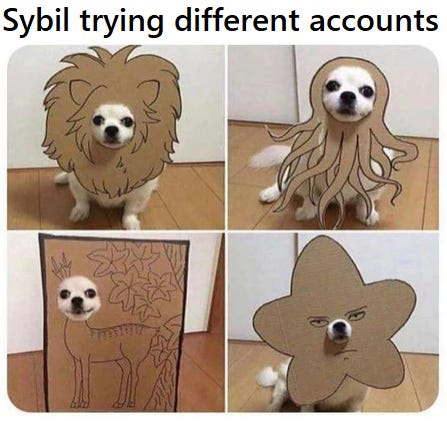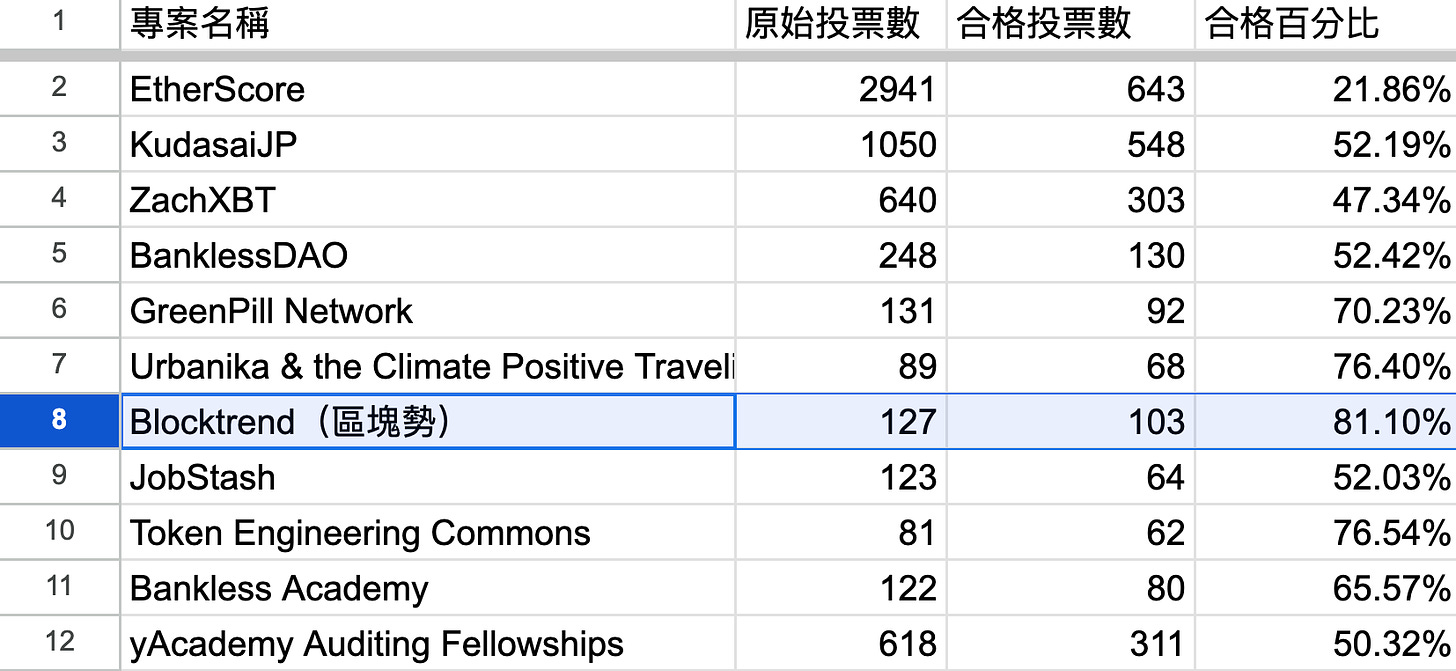GM,
Let's start with two pieces of good news. Blocktrend is planning to hold its second member gathering of the year sometime between the end of November and the beginning of December. The date and venue are still being confirmed, but I've already decided on what we'll be eating at the event 🤣 Please seize the opportunity to register when the time comes.
There will also be several large blockchain events in Taipei in early December. The one I'm most looking forward to is the Funding the Commons annual conference, co-hosted by Protocol Labs and da0. This event focuses on the issue of public goods, which Blocktrend has been actively participating in recently, and is one of the most important international gatherings in this field.

This year, da0 is bringing this event to Taipei, which is not only significant for Taiwan, but also for Blocktrend as a participant in the Web3 public goods. There's still some time until December, and I'll continue to announce more information about the event. Now, let's get to the main topic.
The matching results of the Quadratic Funding event (Gitcoin Grants 18) were announced last weekend, and Blocktrend is honored to have achieved a global ranking of 7th. However, if you look closely at the distribution of funds, you'll find something fishy!
Take Blocktrend as an example, we should have received more matching funds, but for some "unknown reason", we were deducted about $2,400. At the same time, some projects inexplicably received thousands of dollars more, as if they had found money on the street. The vast majority of projects have records of adjustments after the fact, with varying increases and decreases. But this is not the work of hackers, but Gitcoin trying to root out the "voting troops" hidden in the crowd. This article discusses the funding distribution results of Gitcoin Grants 18 and how Gitcoin identifies voting troops.
Below is a diagram of the fund distribution for Gitcoin Grants in the community and education category. There are a total of 238 projects, and only the top 20 are shown in the diagram.

Gitcoin Grants is like a local government's participatory budget, with voting taking place every three months, allowing the public to decide which projects to allocate resources to. The total budget for this Gitcoin Grants 18 is $1.2 million, or about 38 million Taiwan dollars. There are hundreds of participating projects, and the exact amount that can be allocated depends on the results of people's penny voting.
Since the launch of Gitcoin Grants in 2019, the number of participating projects has been increasing and the funding pool has been expanding. According to statistics, there were 148 projects participating in the first year, and this number has grown year by year. By the end of 2022, 3,745 projects have received funding from Gitcoin Grants. The funding allocated by Gitcoin Grants has also grown from $700,000 in 2019 to $21.4 million in 2022, a 30-fold increase in three years.
As the number of participating projects increases and the influence grows, Gitcoin Grants is able to attract more well-known institutions to sponsor. Shell, the world's second-largest oil company, has allocated $100,000 to sponsor climate solutions this time, benefiting 58 projects.
In terms of conversion, the nearly 700 million Taiwan dollars in funds that Gitcoin Grants currently has per year is equivalent to the annual budget of three administrative districts in Taipei. If the funding pool continues to grow, it can even catch up with the annual budgets of counties and even countries in the future.
Where there's money, there are hackers. The image below is the hacker profile announced by Gitcoin!

Most internet hackers attack by finding code vulnerabilities, but Gitcoin most often encounters hackers who disguise themselves as different identities to cast votes. In other words, they are voting troops! If Gitcoin doesn't have the ability to root out hackers, the annual budget of 700 million may all flow into the pockets of hackers. As hacker attack methods evolve, Gitcoin has chosen to introduce the Next Gen Quadratic Funding mechanism to deal with it.
The image below shows the results of this vote. Base Voters represents the original number of voters, and Eligible Voters represents the number of qualified voters. The larger the gap between the two, the more voting troops this project has mobilized. For example, EtherScore, which is ranked first in the table, had an original voter count of 2,941, but the final number of eligible voters was only 643. In other words, nearly 80% of the voters for this project were determined to be voting troops.

KudasaiJP, which is ranked second, is a one-stop blockchain community in Japan, with businesses ranging from KOL marketing and product development to consulting services. The original number of voters was 1,050, but the final number of eligible voters was only 548. Almost half were considered voting troops! By this point, you might be surprised: "Wow! Are they all buying zombie accounts to make money?"
Looking further down, ZachXBT, who was previously introduced by Blocktrend, had an original voter count of 640, but the number of eligible voters was only 303. Could it be that even ZachXBT is in the same boat? Then, Blocktrend had an original voter count of 127 and an eligible voter count of 103. Although the ratio is not as exaggerated as the previous projects, nearly 20% of people were considered voting troops.
I don't know about others, but Blocktrend didn't spend money to hire internet soldiers to vote for itself. The key lies in the Next Gen Quadratic Funding mechanism introduced by Gitcoin:
Quadratic funding combines democracy and market mechanisms to fund the most important projects for the community. Projects that have many supporters willing to make small donations will receive more matching funds than projects that only have a single supporter willing to make a large donation. But quadratic funding has an assumption that does not match the real world. It assumes that each supporter is completely different and is completely rational in deciding which projects to support.
But in reality, some users will create hundreds of fake accounts to vote for themselves, and people often make decisions based on the choices of others. Not everyone is completely different, many people are in the same social circle. Cluster-Match QF hopes to deal with witch attacks and collusion issues based on people's social relationships. The results show that witches and colluders receive less matching funds, while projects that create value for a wide community can receive more matching funds.
Although "Cluster-Match Quadratic Funding" sounds professional, the concept behind it is quite simple - community is more important than the number of people - projects that are supported by more communities will receive more matching funds than projects that are supported by more individuals. This is a new idea that can help small projects get more matching funds.
For example, there are definitely more people in the world who know about ZachXBT than Blocktrend. The language used is an inherent gap. Chinese readers will browse English content, but English readers won't browse Chinese websites. If resources are allocated purely based on the number of people, Blocktrend will never be able to compete with ZachXBT. But if it's calculated based on the number of communities, the result will be much fairer. It's even more advantageous for relatively disadvantaged Chinese projects!
People voting with pennies for a community means they are part of that community. The more diverse the background of a project's supporters, the more value the project can create for a wider community. If the voters of a project are all there specifically for it, only voting for it and then leaving, the system will determine that the supporters' background is too singular and not included in the calculation. This can curb the behavior of mobilizing for votes.
EtherScore, which came in first, held an event (a bit of a cheat) during the voting period. People could receive an honor badge if they voted a certain amount for EtherScore, and it really attracted over 3,700 people to vote. Of these, 800 were eliminated because their Gitcoin Passport scores were not high enough, and of the remaining 2,900, 2,300 came specifically to receive the badge and were determined to not represent the "public" voice, leaving only over 600 eligible voters in the end.
However, there were just too many people voting for EtherScore, and even with 80% eliminated, the remaining 20% of votes still secured it in first place. Quite impressive!
Looking back at Blocktrend's performance, the truth becomes clear. Blocktrend had 127 original voters and 103 eligible voters. The 24 people who were missing were not voting troops bought by Blocktrend, but rather likely those who made a special effort to support and even overcome difficulties to vote. It's a pity that they were "wrongly killed" by the Next Gen Quadratic Funding mechanism.
The fewer people a project has eliminated, the more diverse the background of its supporters. This can also be considered a qualitative indicator, which can measure the familiarity of a project's supporters with the Web3 ecosystem. If viewed in this way, Blocktrend's supporters can be said to be of the highest quality among all projects and are the group that Gitcoin Grants most wants to attract.

On the other hand, when the background of supporters is more singular, it may indicate that they are not familiar with the Web3 ecosystem. The Nawonmesh project in the climate category is the most representative example. They raised questions on the Gitcoin governance forum after the announcement of the fund matching results:
Two-thirds of the population in India live on less than $2 a day, and Nawonmesh is a grassroots project operating in underdeveloped rural areas in India. It's not hard to imagine the profile and financial situation of the group Nawonmesh serves. It's quite difficult to convince them to donate more than $1 to a project that doesn't directly benefit them, let alone using cryptocurrency. Not to mention having to donate more money to other unrelated projects. If I ask them to donate to other projects as well, they will simply not donate to Nawonmesh in the end.
The group that Nawonmesh mobilized is quite far from the Web3. Even so, the original number of voters was still as high as 255. It's not hard to imagine that Nawonmesh spent a lot of time creating wallets for supporters, verifying Gitcoin Passports, and operating penny voting, only to find out in the end that 87% of the matching funds were cut off. Of course, they would feel that the gap with expectations is too big.
Although Blocktrend was not the project with the most votes in this Gitcoin Grants quadratic funding event, it was one of the projects with the highest eligibility ratio and the most diverse supporters. This is more gratifying than getting the highest amount of matching funds in the end, as it shows that everyone not only recognizes Blocktrend's efforts, but also understands the importance of other communities, tools, or infrastructure. This is quite commendable!
The results of the fund matching for the recent two Gitcoin Grants not only provide a great encouragement for Blocktrend, but also explore a new business model as a coin circle media - is it feasible to rely solely on reader sponsorship without corporate advertising? - If it's a small media with a few people, it can now support basic expenses through this public goods fundraising mechanism, and as the Gitcoin Grants funding pool gradually expands, I believe it can support larger teams.
Blocktrend will not rashly dismantle the paywall and completely switch to the public goods fundraising mechanism in the short term. But I will evaluate the feasibility based on the results of each experiment, and if a few years later we can successfully "dismantle the wall", it will definitely be because enough people have told me through their actions that the time is ripe. Thanks again for your voting support!
Blocktrend is an independent media outlet sustained by reader-paid subscriptions. If you think the articles from Blocktrend are good, feel free to share this article, join the member-created Discord for discussion, or add this article to your Web3 records by collecting the Writing NFT.
In addition, please recommend Blocktrend to your friends and family. If you want to review past content published by Blocktrend, you can refer to the article list. As many readers often ask for my referral codes, I have compiled them into a single page for everyone's convenience. You are welcome to use them.